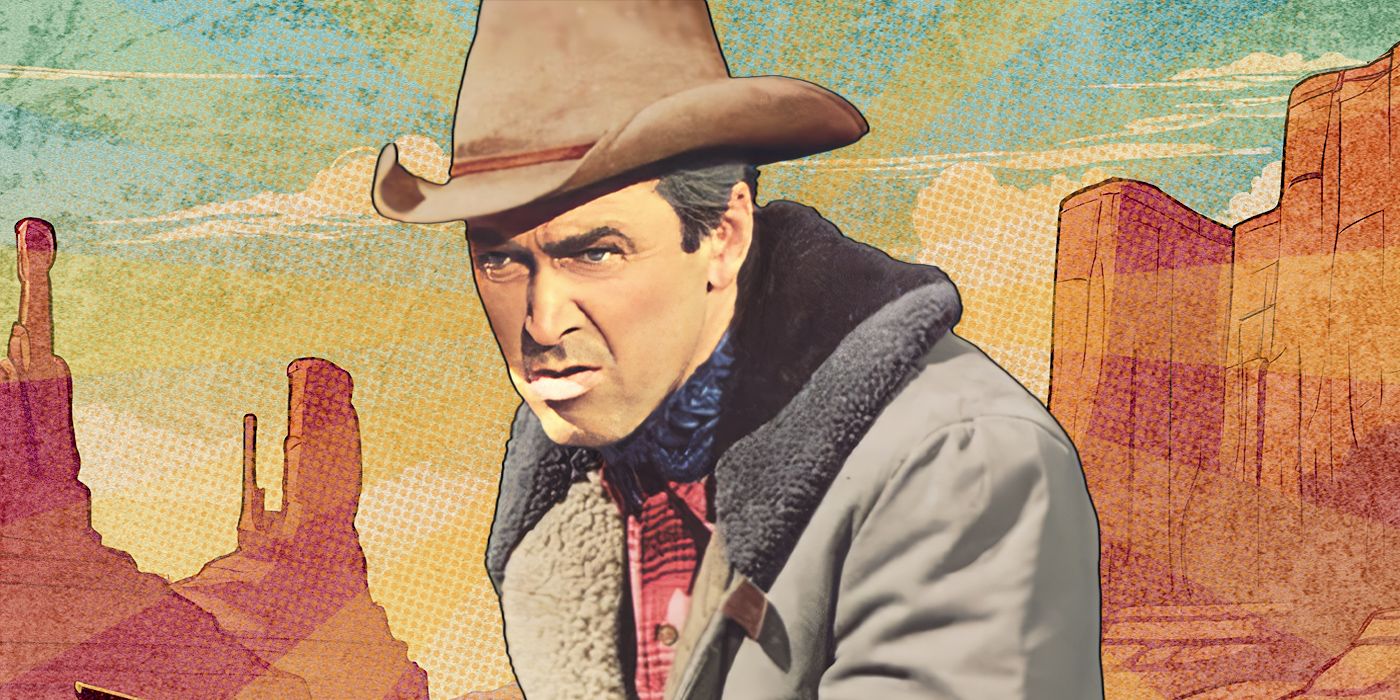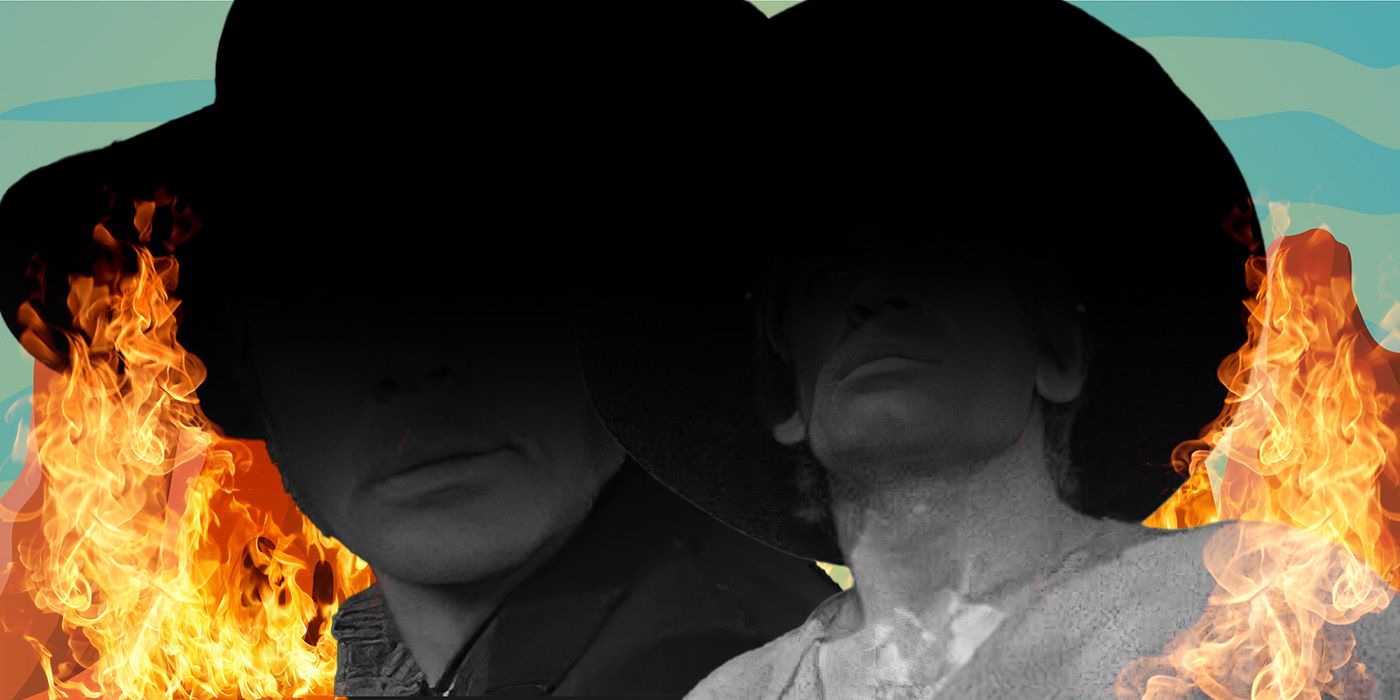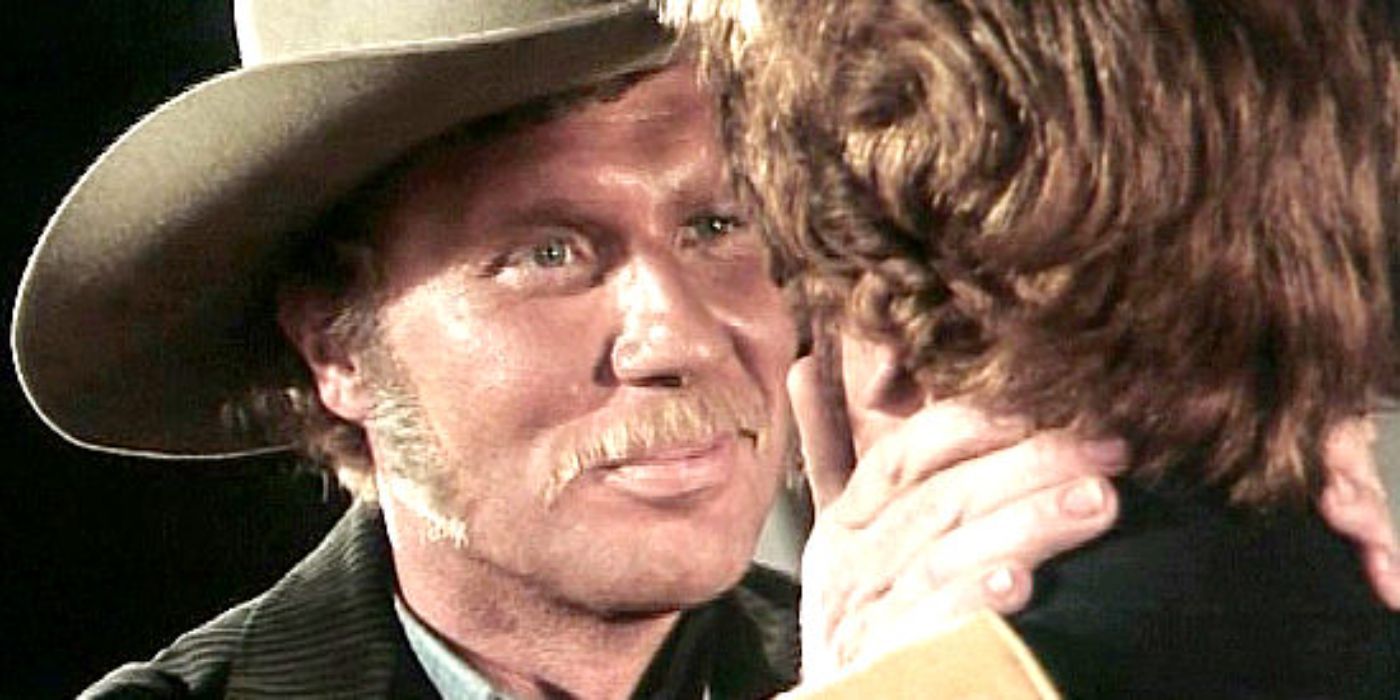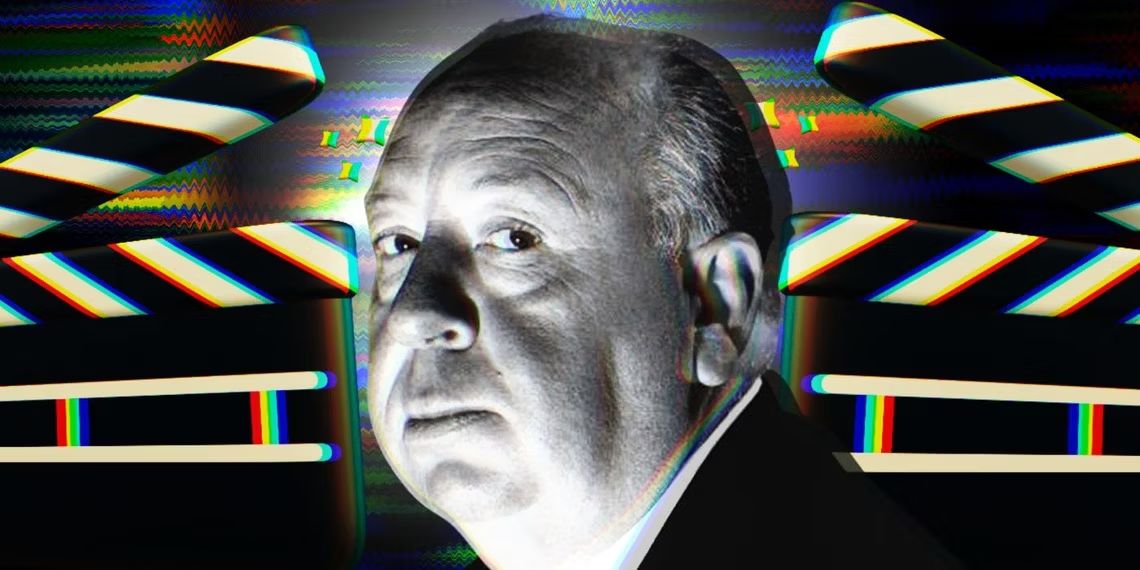The Big Picture
- Antonio Margheriti and Giovanni Addessi create a unique Spaghetti Western with captivating storytelling and excellent direction with And God Said to Cain.
- The Gothic Western effectively establishes the motivations and backstories of the protagonist and antagonist, making them perfect enemies.
- The showdown between Klaus Kinski and Peter Carsten in the Hall of Mirrors is a thrilling and visually stunning scene.
Filmmaker Antonio Margheriti and screenwriter, Giovanni Addessi perfect the Spaghetti Western in their 1970s Gothic revenge tale, And God Said To Cain. The slow-burn, methodical, plodding story and excellent direction make this film a cut above the rest of your run-of-the-mill Westerns. Margheriti and Addessi take time to firmly establish protagonist Gary Hamilton (Klaus Kinski) and antagonist Acombar (Peter Carsten), fully developing the character’s motivations and backstories, creating perfect enemies from this dynamic pairing of actors. Setting the conflict during a tornado adds ontological tension that surrounds the audience and draws them into the story world. What follows is a tense game of cat and mouse that threatens to overwhelm the viewer. What is most interesting is that Kinski and Carsten only appear together on-screen in the film’s final moments during a shoot-out in a hall of mirrors inside a burning mansion.
The scene is fantastic, beautifully adorned, and thrilling to watch. It is remarkably satisfying. The visual storytelling compliments the catharsis of the scene in an all-hell-breaks-loose moment that is genuinely entertaining and unlike any moment in any Spaghetti Western. The film is haunting and engaging despite its lead actors’ theatrical performances, sometimes reminiscent of the acting typical of soap operas. However, this only serves as a testament to the power of the quality of the direction. Margheriti and Addessi have created something truly unique and enduring, something new and veteran screenwriters can take a lesson or two from.
Klaus Kinski and Peter Carsten Are Perfect Enemies in ‘And God Said to Cain’
And God Said to Cain…
- Release Date
- February 5, 1970
- Director
- Antonio Margheriti
- Cast
- Klaus Kinski , Peter Carsten , Marcella Michelangeli , Antonio Cantafora
- Rating
- Not Rated
- Runtime
- 93 minutes
- Main Genre
- Western
- Writers
- Giovanni Addessi , Antonio Margheriti
In the opening of And God Said to Cain, Gary Hamilton is being worked to death by a chain gang. He labors in the hot sun, cracking rocks with a pickax, exhausted but seemingly unbowed and resigned to his fate to serve a hard time for a stagecoach robbery he did not commit. He is pitiable and languishes in misery as the film’s inciting incident takes hold. He is suddenly released from prison based on an exemplary military record, a clever use of dialogue by screenwriter Giovanni Addessi to quickly communicate that Hamilton is a good man wronged. Newly released from prison, he stumbles into town looking for some respite. He comes upon a hotel/tavern and is offered credit, but he proudly declares that all men must pay their debts. This is an exciting use of dialogue as foreshadowing. Hamilton’s brooding nature and detached demeanor, at least on the surface, appear to be disillusionment with his freedom. However, as the film’s events unfold, Kinski’s character intends to collect a debt that he is owed — one that he paid for with his freedom.
The tension is palpable as he meets Acombar’s son on the stagecoach and learns that this is the son of the man who framed him. Hamilton tells Dick Acombar (Antonio Cantafora), who is ignorant of his father’s wrongdoing, to pass along a message that he will see him soon. Thus, this establishes the haunting, Gothic nature of the film. Like the impending tornado threatening to blow away the town, Hamilton haunts the Acombar family like a phantom. The tornado is the ontological fury that mirrors Hamilton’s lust for revenge. It is omnipresent, building a deep sense of dread and an incrementally increasing tension. Filmmaker, Antonio Margheriti puts a metaphorical box around the characters, and the walls are closing in on them. There is no escape, only a bloody reckoning for Acombar. Carstens’s character, who has benefited enormously from his crime, loses his army individually.

The Western That Broke Up Jimmy Stewart and Anthony Mann’s Working Relationship
Disagreements over the Western sparked a rift between the two, leading to the bitter end of their collaboration.
The secrets of his past threaten to devour his family as his son demands answers about the assault against them. This game of cat and mouse goes on and on throughout the film’s 91-minute runtime. Slowly but surely, Acombar loses everything he loves as Hamilton kills his men and his son. His decadent home burns. All his beautiful wallpaper, chairs, and dishes he so proudly displays at his party are in ruins, and he is reduced from a faux gentleman to a vicious, rabid killer that the audience is now expecting him to be. A confrontation is demanded, and as his home burns all around him, he enters a room full of mirrors and begins the most extraordinary scene in any Spaghetti Western.
‘And God Said To Cain’ Features One of the Genre’s Best Showdowns
When Acombar enters the ornate and flaming hall of mirrors, he finally encounters Gary Hamilton. This is the first moment the pair will appear on the screen together, a moment of maximum tension gaudily illustrated by the decadent and wildly exciting setting. The entirety of the film has been to push the characters to this point excruciatingly. When it finally happens, the specter of Gary Hamilton is nearly made flesh, but his haunting presence is amplified exponentially through a series of reflections. He is everywhere all at once. Acombar is surrounded by the revenging reflection of the man he wronged. Where does Acombar even shoot? Where should he direct his rage? Hamilton is the avatar of death, a weapon drawn in dispassionate glory with his finger floating above the trigger.
Director Antonio Margheriti and screenwriter, Giovanni Addessi have created a perfect moment in And God Said to Cain by placing the haunting narrative against a backdrop of ontological tension. The natural world mimics the characters’ inner world — a nice touch by Margheriti that gently ramps up the audience’s emotions to a fever pitch as the box closes around Hamilton and Acombar. The fire burns, the tornado roars, and flames lick an inky black sky. A big moment like this deserves a big scene; this one has just about everything except the kitchen sink. It’s a total feast for the eyes and a wonderful edge-of-the-seat moment as Hamilton revels in Acombar ruin that audiences can feel in their bones. The moment between the two lingers for an eternity, with Acombar screaming to the heavens.
Hamilton pulls the trigger, and the bullet smashes into Acombar’s guts and puts an end to their terrifying relationship. He crumples to the floor dead. It almost seems underwhelming; there is no arterial spray, no cool tagline utterance from the hero’s lips, just a mortal enemy whose corpse and empire lay charred and black upon the dusty, arid earth. Hamilton has revenge, and the audience has a hell of a catharsis. His mission is complete; he doesn’t linger. The natural world calms and the tornado subsides. The sky begins to soften, and Hamilton rides into obscurity, never to be heard from again.
Why Is ‘And God Said To Cain’ So Good?
Revenge films may be the oldest Western trope there is. There is certainly no shortage of films that pit one man wronged against another in a blood-soaked hell ride through the dusty Old West. These films fulfill the taboo human desire for revenge. Everyone can understand the characters’ desires for blood and carnage, and it’s more or less a safe place to experience those feelings. Films of this nature tend to revel in the violence and put that center stage. After all, the idea is that audiences are there for the shoot-em-up, not necessarily for protracted human drama. The violence is often gratuitous and sometimes so intense it is unsettling; think of films like Bone Tomahawk. On the surface, the slow burn, dramatic nature of And God Said To Cain appears weak, but in reality, it is this strength that sets it apart from other revenge Westerns.
Antonio Margheriti and Giovanni Addessi have put human drama at the center of this film. The film is violent, to be sure, but it is the existential terror created by the interplay of setting and narrative that stands out. Villains are shot down rather bloodlessly; that is to say, the death scenes are not at all gory. The ever-present threat of the unknown drives the tension, not the violence itself. The film is psychologically violent, delving deep into the protagonist and antagonist to establish a set of monumental stakes worth risking. Hamilton’s rage at the raw deal he experiences proves that no good deed goes unpunished.
The injustice he’s experienced tugs at the heartstrings of any person who values the sacrifices of a soldier, and so what happened to Gary is incredibly awful and worthy of revenge. Conversely, Acombar does love his son. He tenderly embraces his son Dick and speaks fondly and highly of him. He is not as terrified of Gary as he is of losing the respect and admiration of his son. In a scene where the embattled patriarch shakes a fist full of dollars in a furious lament about his sins, he illustrates that some things are more important than money, too, but Acombar has learned this lesson far too late.
Antonio Margheriti’s ‘And God Said to Cain’ Is an Underrated Gem
This is made possible by the enormous amount of time Antonio Margheriti spends focusing on the relationships between the characters and precisely what makes their fates so compelling to watch and satisfying to experience. So finally, when all is stripped away And God Said To Cain reaches its climax, a protracted shoot-out is not necessary and is not the point. Acombar has lived his stolen life with the assurance that this day would never come, but it has, and he has lost everything necessary to him anyway, so where is the motivation to fight back? What is left for him? By withholding the meeting of these two by building a slow-burn tension incrementally and crafting a lush and decadent set, now in utter ruins, Margheriti eliminated the need to resort to shock value to create a film worth watching.
In And God Said To Cain, Margheriti and Giovanni Addessi create the Spaghetti Western by building a sophisticated pressure cooker game of cat and mouse that combines narrative and setting to elevate the tension and withholding the meeting of Gary Hamilton and Acombar, until the results in a thrilling climax that will linger in the memories of audiences. The masterful blending of direction, performance, and story has created something unique and some of the best moments ever in a Western.
And God Said To Cain is streaming on Plex in the U.S.
Watch on Plex





